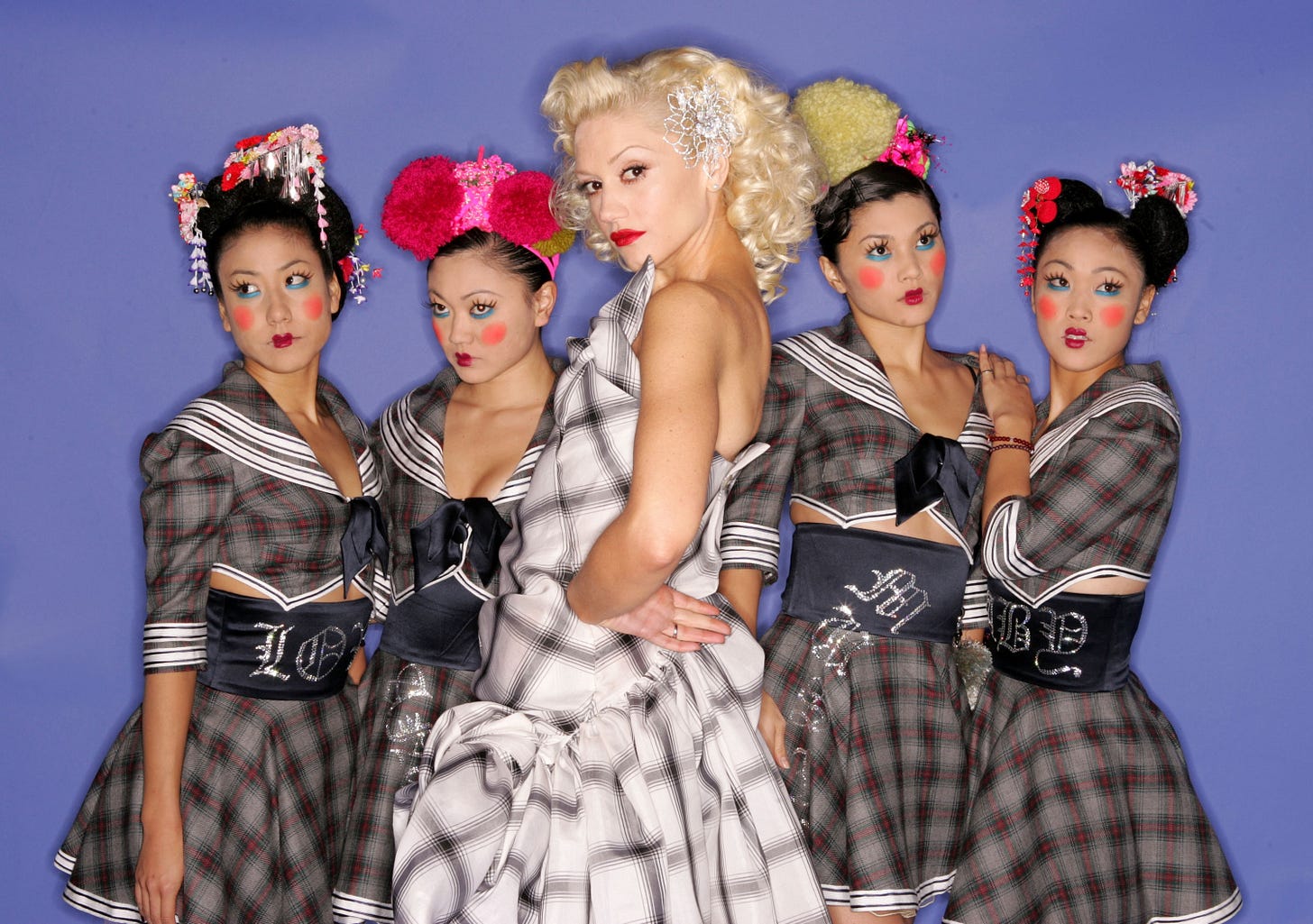When Gwen Ruled the World: The Legacy of Love. Angel. Music. Baby. at 21
Two decades after its release, the album’s hits, controversies, and Harajuku Girl universe still define Stefani’s artistic identity.
Marking its 21st anniversary, Gwen Stefani’s Love. Angel. Music. Baby. still feels like the most theatrical, high-concept statement of her career. When she first released the album in late 2004 — stepping away from No Doubt — it felt like more than a solo debut: Gwen was reinventing herself as a pop architect, building a sound and a visual world that fused her punk roots, ‘80s new-wave obsessions, and her fascination with Japanese style.
Collaborating with a dream team of producers — Linda Perry, the Neptunes, André 3000, Dr. Dre, Dallas Austin, Jimmy Jam & Terry Lewis, and others — she constructed a genre-spanning album that defied easy categorization. Slant Magazine once observed that the album could be understood in three parts: the sleek, modern tracks (“What You Waiting For?”), the retro-pop throwbacks (“Serious”), and the somewhere-in-between experiments that weave Gwen’s playful persona into every beat.
The tension in L.A.M.B. was not just musical — it was personal and public. While Gwen insisted she never saw it as a traditional “solo record,” pitching the album as a concept rooted in fashion and identity, skeptics perceived the project as overbranded. Pitchfork She leaned into her L.A.M.B. clothing line, named the album after it, and cast four dancers as her Harajuku Girls — “Love,” “Angel,” “Music,” “Baby” — to accompany her in videos and on tour. NME But her vision came with costs: critics and cultural commentators raised serious questions about appropriation. Gwen, in response, has defended her love for Japanese culture, explaining that her father’s work with Yamaha inspired her early fascination, and that the Harajuku Girls were meant to be a whimsical tribute. AltPress
Commercially, the gamble paid off. L.A.M.B. sold in the millions, earned multi-platinum certifications, peaked in the top tier of the Billboard 200, and gave Gwen her first solo chart-topping single with “Hollaback Girl.” At the 2006 Grammy Awards, she secured six nominations, including Album of the Year. Yet beyond the numbers, the album’s long-term influence is more telling: PopMatters later called it “a crown jewel in the formative pop sounds of the 2000s and beyond,” praising its audacious blend of nostalgia, self-invention, and genuine vulnerability.
Gwen herself has reflected on what made that era so special and unrepeatable. In a People interview, she said that in 2004, she was completely free — no band, no children — and had “an unbelievably clear vision” backed by a physical “style bible” she built from torn magazine clippings. That unfiltered creative energy gave birth to some of her most iconic visuals: from the Alice-in-Wonderland–inspired video for “What You Waiting For?” to the camp, choreographed visuals of “Luxurious” and “Crash,” everything felt elevated, theatrical, and deeply personal. The aesthetic she built then remains foundational to her brand decades later.
Of course, not all of it aged without critique. Some of the cultural framing, particularly around the Harajuku Girls, has been reassessed over the years. Yet even its most contested moments exist as part of a larger pop-art experiment: Gwen Stefani creating her most ambitious and stylized self-portrait, a glittering experiment in identity, fantasy, and sonic risk. After 21 years, Love. Angel. Music. Baby. survives not just as a time capsule, but as a blueprint for pop reinvention.



